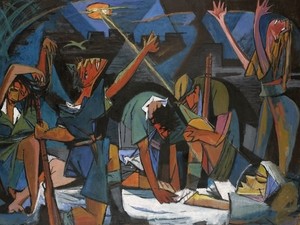
We recently drove north to see an art exhibition entitled "The First Decade: A Hegemony and a Plurality". Despite the pedantic title, we enjoyed this overview of Israeli painting from 1948-1958. The museum of art at kibbutz Ein Harod Meuchad was itself of great interest, as is the entire subject of kibbutz communities in Israel.
A form of communal living combining socialism and communism, the kibbutz has made an imprint on Israeli life far greater than its numbers would suggest. The first kibbutzim were built by Jews who came to Israel during the second aliyah, ten years which span the period from the outbreak of government-inspired pogroms in Russia – the Kishinev pogrom – to the start of WWI. These new immigrants were inspired by a work ethic to build the Jewish state in Palestine with the labor of their own hands, a philosophy that was espoused by leaders such as A. D. Gordon (1856-1922). Gordon came to Israel with his family when he was 48 and supported himself as a simple agricultural worker. In the evenings after working in the fields, he toiled away on his philosophical texts, which became the inspiration for many newcomers to Palestine. Originally a member of the Love of Zion movement, Gordon eventually founded the Young Workers, a non-Marxist, Zionist movement which taught that physical labor on the land would redeem the Jews from having been "completely cut off from nature and imprisoned within city walls for two thousand years."
The early kibbutzim were built primarily on unused land in the Jezreel valley, on the central coastal plain or in the upper Jordan Valley. Their members, kibbutzniks, were extremely idealistic, expecting to live unexploited lives while not exploiting others. That is, they would work for themselves and employ no laborers. These early kibbutzniks were true communists, before the Communist party even existed, and planned to work equally and share equally in the fruits of their labor. They were so idealistic that they even expected that the local Arab laborers who worked for the wealthy Arab landowners in Beirut and Cairo would welcome them, as would Arab immigrants who would come to Palestine to participate in the growing economy resulting from Jewish development.
The history of the kibbutzim is a woeful tale of farming swampy land, malaria and other sicknesses, fighting the Arabs, and lack of money. But despite initial failures, by 1948 kibbutz members constituted about 7.5 per cent of Israel's population. Most kibbutzim were supported by Prime Minister David Ben-Gurion's Mapam party (precursor to today's Labor party) and they supplied many of the military and political leaders of the growing nation. While branching out from agriculture to manufacturing (and later tourism), the kibbutzim remained true to their ideals, discouraging individual families from raising children on their own or even eating separately. Children's nurseries and communal dining halls in the 1980s were symbols of this severe ideology. Eventually the economics of the modern age caught up with the kibbutzim, resulting in a dramatic decline in kibbutz membership by nearly two-thirds, following the failure of the Israeli economy. While kibbutzim are rebuilding their status based on modern methods of management and many have privatized, a handful still cling to the original ideology on which the movement was built. Many Israelis who now live on kibbutz land are strictly householders, with no ownership of communal kibbutz property and enterprises.
Ein Harod Meuchad, established in 1921 in the Jezreel valley is one of Israel's first "green" kibbutzim, located near Mt. Gilboa and the Harod spring. In 1953, Ein Harod had split into Ein Harod Meuchad and Ein Harod Ihud, based on fierce ideological differences. Ironically, today the two Ein Harods are both members of the United Kibbutz Movement, one of several groupings in the kibbutz movement, and the ideology which caused the split is hardly remembered. The art museum on the kibbutz is the first dedicated art museum to be built in the Yishuv (pre-state Israel). It was built by the kibbutzniks in the 1930s, even before other essential needs were satisfied, because of the belief that culture and art are among the most basic formative constituents of a society. The current museum was slowly built over Israel's first decade. Its designer was Samuel Bickels who had trained as an architect in Europe before coming to Israel in the 1930s. The building's natural lighting uses sophisticated double roofs with clerestory windows which allow for excellent illumination without the need for artificial lighting. "The museum conducts an ongoing activity of retrospective solo exhibitions and thematic group exhibitions. It also serves as a meeting point for various publics from diverse social strata: for a local, regional public (both Arab and Jewish) and for people from all over Israel. The exhibitions constitute a point of departure for symposiums, workshops and activities with the public."
To celebrate Israel's 60th anniversary, all six decades of Israeli art are being shown in six different venues all over Israel. Most of the paintings and sculpture exhibited were by artists who had been active before Israel's declaration of independence in 1948. We saw a concise survey of early Israeli art, historically interesting and educational and esthetically enjoyable. Some of the themes touched upon in the artworks are socio-cultural issues of the founders of the State, Holocaust issues, Jewish and Arab immigration, the War of Independence, women artists, and among the most interesting, the emergence of a collective national identity.
After having our fill of art, we toured the kibbutz's regional museum, Beit Sturman, a regional science museum. During the informative introductory film we learned that the museum was named after a kibbutz notable who was killed in 1938, whose son, and later his two grandsons, also fell in subsequent Arab-Israeli wars. The museum's aim is to educate the region's children in local archaeology, botany and history. We particularly enjoyed seeing the extensive collection of Roman milestones and the stuffed animals and reptiles in the botany exhibit. Afterwards, we repaired to a nearby fish restaurant, where we enjoyed an endless number of small salads, whole grilled fish, french fries and dessert. An excellent day trip which couldn't have ended better.
Kibbutz Ein Harod Meuchad, www.museumeinharod.org.il/english/about/
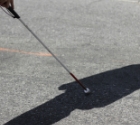 On Going Blind
On Going Blind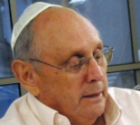 Leyland Goss 1936 – 2008
Leyland Goss 1936 – 2008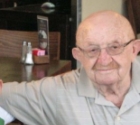 Max Geffen 1924 – 2008
Max Geffen 1924 – 2008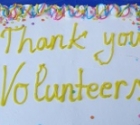 A new website in English - on Volunteering - Launched in Israel
A new website in English - on Volunteering - Launched in Israel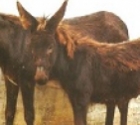 Help Needed for Abused Horses and Donkeys
Help Needed for Abused Horses and Donkeys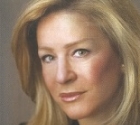 Heather's Heseg
Heather's Heseg Steve Kramer
Steve Kramer